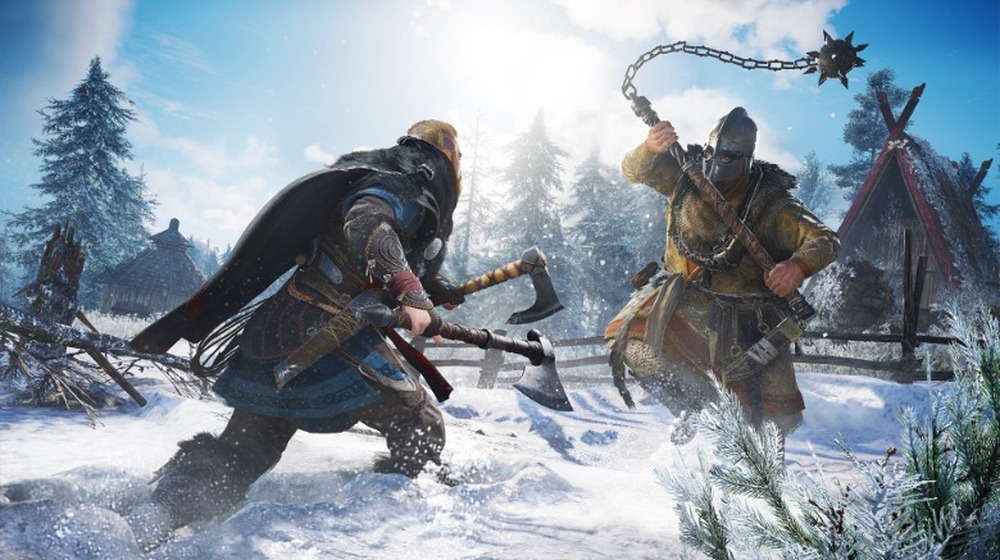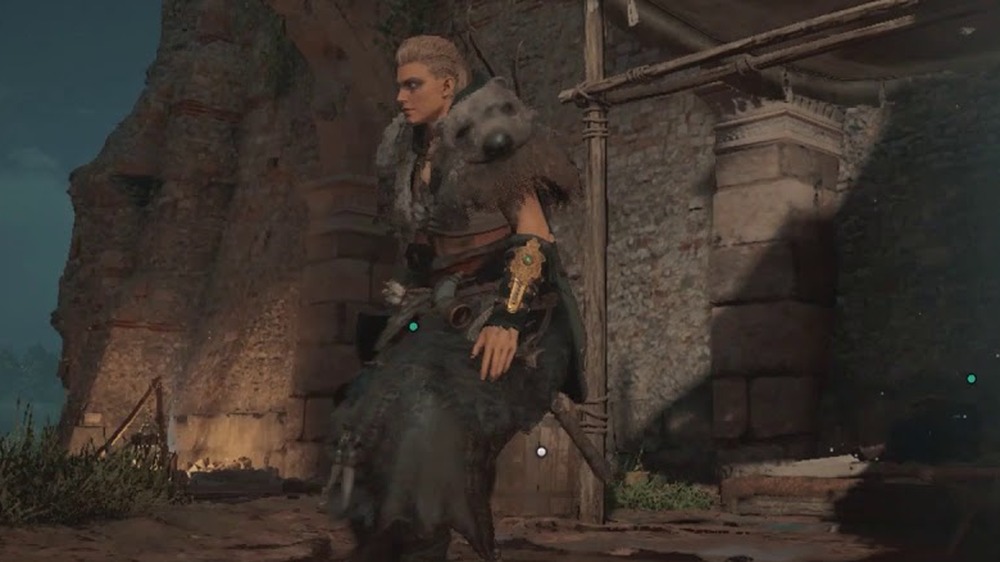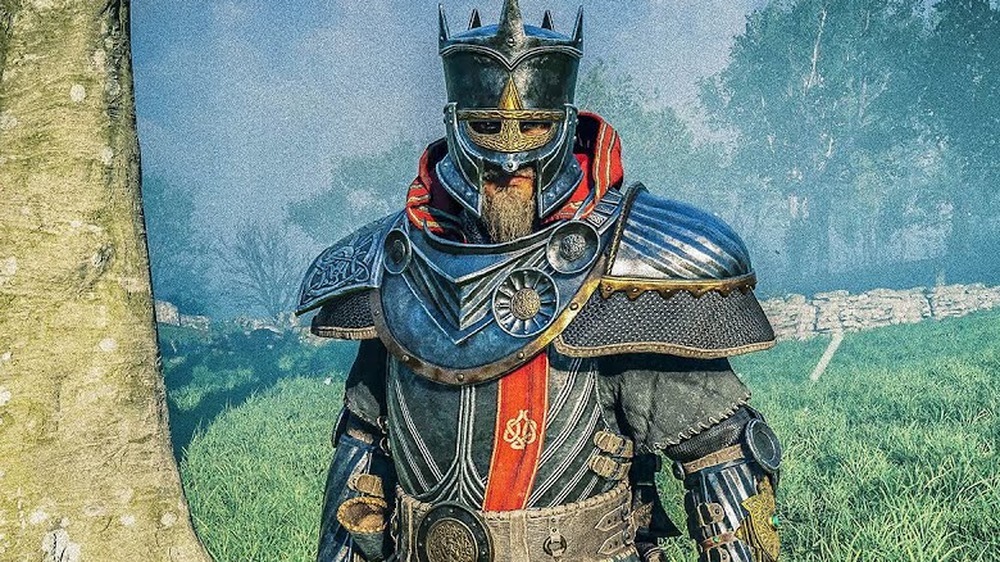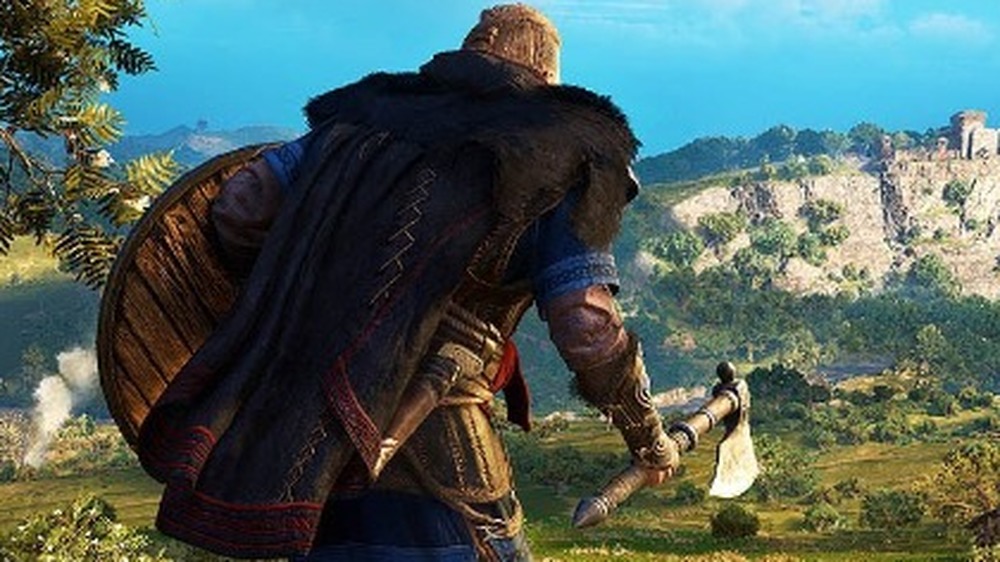Things That Were Historically Incorrect In Assassin's Creed: Valhalla
Assassin's Creed: Valhalla came out on Nov. 10 to fairly positive reviews. The game is the twelfth entry in the main franchise, which started with Assassin's Creed in 2007.
The games feature open-world maps, focusing on stealth, combat, and historical elements. The early series depicts the struggle between the Assassins, who fight for peace, and the Templars, who look to control the populace. Valhalla is a bit removed from that original storyline, focusing on the Vikings' invasion of Britain; but eventually you become embroiled in the Assassins versus Templars conflict. As a result, there are new things to do in the game, and it can occasionally feel like you're playing it all wrong.
But what of historical accuracy? Ubisoft is generally pretty historically accurate — even when it comes to horses — while taking some liberties because, well, it's still a video game. But what about Valhalla's accuracy? Where did Ubisoft go wrong with its recent Assassin's Creed installment?
Fighting Style
The fighting style in Valhalla is relatively accurate, with one exception. TheSixthAxis spoke with Viking experts at Hurstwic, LLC, who "use the Scientific Method to reverse engineer how Vikings fought." During that interview, it was noted that the fighting style was pretty true to history.
Most importantly, the manager at Hurstwic, William R. Short, told TSA, "The game is clearly intended for entertainment (and not as a history lesson), set in a world where the rules of the real world don't always apply and can be bent." This is crucial to note when talking about Assassin's Creed, where the stories are based in history but must be taken with a grain of salt.
During Viking battles, according to TheSixthAxis, great axes, bows, and shields were used, and sometimes Vikings dual wielded. What they rarely did was throw axes. In the game, you can throw an axe with deadly precision, sometimes taking out an enemy with one shot. However, as William R. Short told TSA, "Throwing axes are a real thing, but Viking axes were not throwing axes. The physics of the Viking axe makes it less than suitable as a throwing weapon."
Roman Ruins
In the 9th century, the Roman ruins would be simply that: ruins. In Valhalla, some of them are still standing in England, where you can explore them.
As explained by one Reddit historian who specifically studies the Viking impact on Ireland and the Isle of Mann, "The discovery of the Roman amphitheater upon the present site of Guildhall in London is exactly where the Saxons [sic] residents of the city (and nearby Lundenwic) were known to hold their folkmoots, in the area always specified as being to the north-east of the Cathedral. This does suggest possibly that the Saxons used the old ravaged Roman amphitheater to have their own deliberations."
In other words, being able to explore the Roman ruins is accurate, but not the fact that they're mostly still intact. At this point, in 873 AD, the Roman Empire had been defunct for 478 years, and therefore the Roman structures were crumbling skeletons by that point.
Clothing
According to redditor "Kelpie-Cat", a PhD student in Celtic and Scottish culture, the clothing in Valhalla is not without its flaws. This student took issue with a priestess in the game that was seen wearing gold jewelry, fur, a skimpy robe, and a headdress adorned with horns.
In reality, according to commenters and the historical text Saga of Eirik the Red, a priestess was reported as wearing "a black mantle with a strap, which was adorned with precious stones right down to the hem. About her neck she wore a string of glass beads and on her head a hood of black lambskin lined with white catskin...About her waist she had a linked charm belt with a large purse. In it she kept the charms which she needed for her predictions. She wore calfskin boots lined with fur, with long, sturdy laces and large pewter knobs on the ends. On her hands she wore gloves of catskin, white and lined with fur."
The priestess of that story seems more like a wizened woman dressed for cold than some of the officiants spotted in Valhalla. This Reddit thread includes artist reproductions of accurate priestess clothing, as well.
Weather
RockPaperShotgun reports that the weather in Valhalla is more all over the place than it would be in reality. England, for example, "has varying weather depending on how far up or down the country you are." Norway in-game is constantly covered in snow, no matter what time of year.
According to ScienceDirect, the years between 900 and 1300 CE were known as the Medieval Warm Period, which was "a time of warm climate." There is conclusive data from the Greenland ice core that shows a warm period from 900 to 1300, which then led into the Little Ice Age that lasted from 1303 to 1860. During the Medieval Warm Period, the Vikings took this opportunity to invade Greenland, but the settlement disappeared sometime in the 15th century.
Valhalla is a bit inaccurate with this aspect. While it's nice to show the diversity of the landscape in-game, it's just one more thing outside the realm of possibility that Ubisoft took liberties with.





